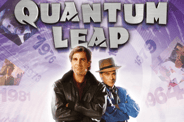If your business doesn’t depend on machine alignment, you might doubt that a company like VibrAlign could make the inspiring, convincing claim that it wants to change America, one alignment at a time.
VibrAlign doesn’t express this lofty aim in a pricey ad crafted by modern-day Mad Men. Nor does it dazzle with famous actors and fancy graphics. VibrAlign simply posted on its Website a four-minute, 50-second video featuring footage of the company’s Richmond, Virginia offices and comments from key team members. President John Walden and CEO David Zdrojewski are featured, but so are line employees like Rick Coad, Logistics Coordinator.
At entreQuest, we call this “telling your story,” and this is one of the best examples we’ve seen. Every company has a unique story. Every company can trace the uplifting compulsion that drove it into being. But many companies don’t know how to translate these into a compelling story. Told well, a company’s story can compel action and even create a movement.
VibrAlign’s story is a great example of a relatively small company conveying a bigger purpose. The video works because it is personal, genuine, unique and sincere. No one but VibrAlign could deliver this specific message with these faces in these words. And by the time David Zdrojewski looks at the camera and declares, “Here at VibrAlign, we want to realign America. I mean, really—we want to realign America,” you can’t help but believe him.
A good story provides an emotional connection and engages with a company’s most important constituents: its employees and its clients. A good story answers two questions. First, why do we exist? Another way to ask this is, what’s our higher purpose? What problem do we solve in the market? What unique value do we offer that no one else can provide?
The second question is, what can someone expect when they come in contact with our company? The answer amounts to a promise, so it must be absolutely sincere.
Authenticity is central to an effective story. It’s also the element that makes people nervous. Being authentic means putting yourself out there being vulnerable and exposed. Some people get nervous because they’ve got a big ego and are afraid of looking small. Just as many people have a small ego and are afraid of looking big. We’ve seen this dynamic over and over again.
The truth is, authenticity means not being any bigger or any smaller than you are. Authenticity is actually the easiest stance you can takeall you have to do is be yourself.
We’ve helped hundreds of companies identify and refine their stories, and a few misconceptions crop up regularly. A story doesn’t have to be a five-page narrative that company leaders write in a fit of motivation and then shove into a drawer to be forgotten. A story could be a three-sentence statement of impact, or a 30-second YouTube video.
When some people hear the word “story,” they take that literally: This is a story of how our company began, how it grew and how it continues today. Others interpret the word figuratively: A story is an “idea” of our company, the elusive “us-ness” that drives branding campaigns.
In reality, the best stories have a bit of both. A story is an emotional imprint that you lean on and enable your customers and workers to lean on; a story is also a concrete definition of the product or service or experience you provide.
Think of Starbucks. It’s definitely selling more than coffee, if you consider its implicit promise of treating yourself with an experience that caters to your idiosyncratic tastes. But its business model relies on overall consistency and predictability. We want Starbucks to meet the same expectations no matter which location we visit.
Pulling these two elements together—the literal and the figurative—to craft a compelling story demands that you strive for resonance. Can you tell a story about your company that’s so memorable, people will not only remember it, they’ll want to talk about it? A sure way to fail in that objective is to fail to engage your audience and to create enthusiasm.
Engaging someone emotionally—drawing them in or touching them in some way—builds an invisible bridge between you. It’s a connection. And don’t we all prefer doing business with people we share a connection with? Generating enthusiasm simply means getting someone excited about your relationship. Make them want to do business with you again.
Enthusiasm truly is infectious. Take another look at VibrAlign’s video, and see if their passion for their business doesn’t rub off on you. It doesn’t even matter that you and I may never need to hire a company to align our machines. By the time you finish watching, I bet you’ll be rooting them for anyway.
Joe Mechlinski is the CEO of entreQuest and has partnered with countless leaders to effectively improve their team’s performance, their clients’ experience, and their company’s profits.







